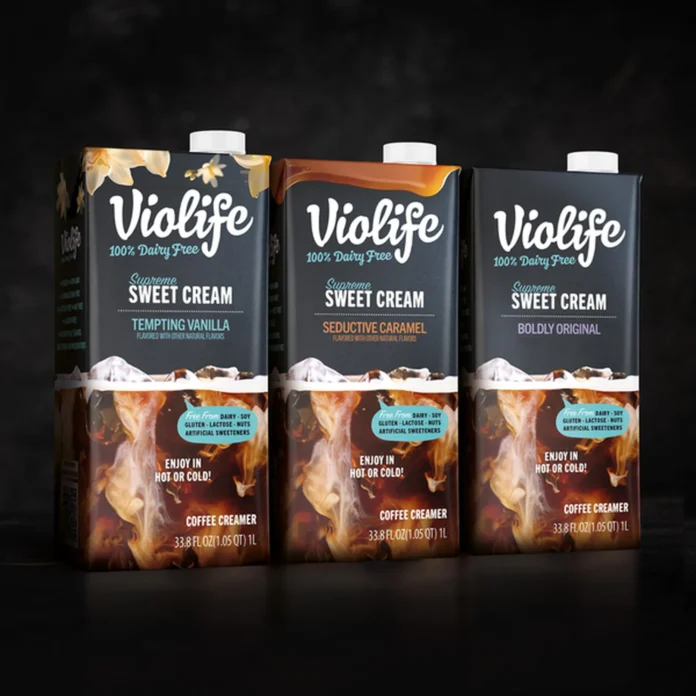By Patrick Llewellyn, VP Digital and Design Services at VistaPrint
How to take a bite out of design in 2025
Pantone’s Color of the Year for 2025, “Mocha Mousse,” might be a delicious-sounding name for the food and drink industry, but this year will be all about getting brands to shake off the beige and show a brand’s true personality through design. VistaPrint’s community of professional designers have picked out the top visual design trends for 2025 which can be easily incorporated into your marketing to help your products fly off the shelves.
Snap, crackle, and pop with neon colors
The Barbie movie may have popularized pink, but in 2025 neon palettes will really step into the spotlight. Electric shades of blue, yellow and pink will make it easy for brands to add energy and identity to their designs. Forget fading into the background — bold colors can put the “fun” in functional when it comes to food. Cult favorite bakery Milk Bar, for example, uses neon pink as an effective accent color across its packaging, website, and logo. The powerful pop of color gives customers a sugar rush before they eat any sweet treats, while the saturated hue makes the products feel indulgent, special, and memorable. Big Gay Ice Cream in New York also embraces an all-out neon rainbow to create a dynamic, celebratory vibe that matches its inclusive ethos.

Create a warm feel with chilled fonts
Not every brand is ready for (or needs) neon. So for those looking to keep things more relaxed, laidback, and human, handwritten fonts will be a top design trend for next year. Imperfect typography conveys authenticity and approachability, helping brands feel unfiltered and relatable in an overly polished, AI-driven digital world. Lettering can look hand-drawn and feature uneven alignments, or can use simple fonts in a beachy color, like butter yellow to add personality. LaCroix Sparkling Water has long championed this trend, using wavy, free-spirited lettering that mirrors the movement of H20. Paired with ocean-inspired graphics, the brand’s typographic choices evoke feelings of summertime suntanning and long beachy afternoons.
Similarly, The Coconut Cult, a California-based yogurt brand, leans into hand-drawn lettering in a different way that feels as though you’ve picked up a jar of homemade yogurt at the farmer’s market, labelled by an artisan. It’s the kind of branding that makes a business feel young, casual and cool — a brand you’d want to tell your friends about.

Organic design: using natural ingredients
Whether you’re selling vegan meat or herbal tea, the food and drink industry has long relied on nature-inspired motifs. This year’s “rewilding” design trend reflects a deeper connection to sustainability and changing consumer values. Images of leaves and branches will be abundant: look at how Califia Farms includes flower and leaf figures on its bottles, and continues the natural theme with warm, earthy colors to emphasize its use of natural ingredients. Pukka Herbs takes a slightly different approach to this aesthetic, incorporating intricate botanical illustrations and patterns that create a feeling of a modern-day apothecary. Brands embracing this trend signal that they’re rooted in something real, which resonates with today’s eco- and health-conscious consumers.
Just as flavors must be balanced in a dish, design elements need balance to tell a cohesive story. In 2025, it’s all about authenticity — whether you’re demanding attention with neon colors, relaxing your tone with handwritten fonts, or grounding your identity in nature. Great branding is about connecting with the right customer, and reflecting their values, aspirations and lifestyles. So whether you’re making a splash or focusing on core ingredients, the key is to be real — as that’s how you make a lasting impression.
Credit: Source link













